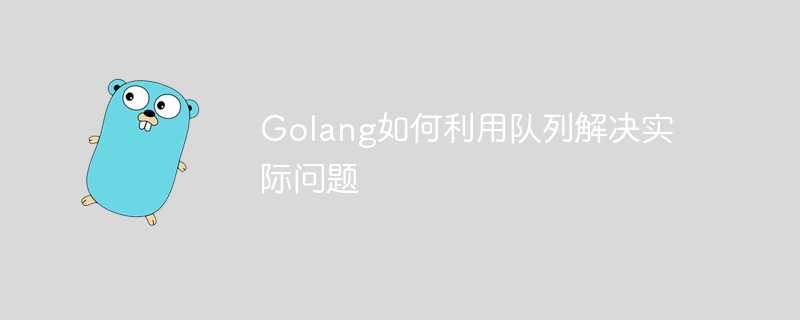

How Golang uses queues to solve practical problems
Queue is a common data structure in computer science. It has a first-in-first- Out, FIFO) characteristics. In Golang, we can use the built-in container/list package to implement queues.
This article will introduce you to how Golang uses queues to solve practical problems, and illustrate it with specific code examples.
Task scheduling is a common application scenario, especially in concurrent programming. Queues can be used to manage multiple tasks well, ensuring that they are executed in order and avoiding resource competition.
The following is a simple sample code:
package main import ( "container/list" "fmt" ) func main() { queue := list.New() // 添加任务到队列 queue.PushBack("任务1") queue.PushBack("任务2") queue.PushBack("任务3") // 执行任务 for queue.Len() > 0 { task := queue.Front() queue.Remove(task) fmt.Println("执行任务:", task.Value) } }
In the above code, we use queues to manage tasks. First, a queue is created using thelist.New()function. Then, add three tasks to the queue through thePushBack()method. Finally, by continuously looping through the queue, each task is executed and removed from the queue when execution is complete.
Message queue is a common application pattern used to decouple and optimize asynchronous communication in the system. Through the queue, you can ensure that messages are processed in order and improve the reliability and performance of the system.
The following is a simple sample code:
package main import ( "container/list" "fmt" ) func main() { queue := list.New() // 添加消息到队列 queue.PushBack("消息1") queue.PushBack("消息2") queue.PushBack("消息3") // 处理消息 for queue.Len() > 0 { message := queue.Front() queue.Remove(message) fmt.Println("处理消息:", message.Value) } }
In the above code, we use a queue to manage messages. Add three messages to the queue via thePushBack()method, then loop through the queue, process each message, and remove it from the queue when processing is complete.
In network programming, using queues can effectively manage concurrent network requests. By adding multiple requests to the queue and sending them one by one in first-in, first-out order, you can control the number of requests sent at the same time and avoid too many concurrent requests.
The following is a simple sample code:
package main import ( "container/list" "fmt" "net/http" ) func main() { queue := list.New() // 添加请求到队列 queue.PushBack("http://example.com/request1") queue.PushBack("http://example.com/request2") queue.PushBack("http://example.com/request3") // 发送请求 for queue.Len() > 0 { request := queue.Front() queue.Remove(request) response, err := http.Get(request.Value.(string)) if err != nil { fmt.Println("发送请求失败:", err) } else { fmt.Println("接收响应:", response.Status) } } }
In the above code, we use queues to manage network requests. First, a queue is created using thelist.New()function. Then, add the three request URLs to the queue through thePushBack()method. Finally, the requests are sent one by one by looping through the queue and printing the response status once the response is received.
The above are some examples of using Golang queues to solve practical problems. Queue is a simple but powerful data structure that can help us deal with various problems. I hope that through the introduction and sample code of this article, you can better understand and apply queues in Golang.
The above is the detailed content of Golang practice of using queues to solve practical problems. For more information, please follow other related articles on the PHP Chinese website!




